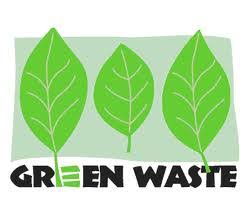SCHEDULE YOUR PICK UP - CALL OR TEXT (714) 230-6343

Green waste is a term that was coined to refer to organic waste that can decompose and has a high concentration of nitrogen. It is vital because it can be used for a variety of purposes such as the production of renewable energy, manufacturing topsoil, and sewage disposal. Green garden waste (materials such as leaves, grass clippings, and kitchen waste) makes up approximately 14% of the average household’s waste.
Why is Green Waste Important?
One of the most critical uses of green waste is in the development of manufactured topsoils. Top soil is the top layer of soil, in which all plants grow. It usually covers a layer of subsoil, which in turn covers the rock underneath. Topsoil is so important because it contains all the nutrients that plants need to survive. They increase the water retention capacity of regular soils, introduce minerals to the soils, and in turn produce nutrients which are essential to the crops. Any and all crop growers, from commercial farming to at home gardeners, rely on topsoils for everyday food and plant production.
Another way green waste is used is in sewage disposal plants. In some plants, the sewage is mixed with green waste that is then composted; which is just the decomposing of organic matter. One of the main advantages of the process is that it leads to the elimination of pollutants and pathogens that were in the sewage making it safer to handle.
One of the most important uses of green waste is that it is used in the production of biogas. When some of the green waste decomposes, in addition to nitrogen, it produces cellulosic ethanol which is an important biofuel. It can be used as fuel; it can be used for any heating purpose, such as cooking. It can also be used in a gas engine to convert the energy in the gas into electricity and heat. Using biogas leads to a reduction in the reliance on petroleum gases.
Research has shown that human activity is the main source of green waste with countries such as the United States, China, and the United Kingdom. High-income countries generate relatively less food and green waste, at 32 percent of total waste. Middle- and low-income countries generate 53 percent and 57 percent food and green waste. While America is a higher income country, we tend to generate more dry waste that could be recycled, including plastic, paper, cardboard, metal, and glass, than green.
Recycling green waste reduces dumping in landfills, contributes to reducing the number of greenhouse gases in the environment, and creates sources of Renewable Energy. So take part and give a helping hand to a greener Earth!
- /
